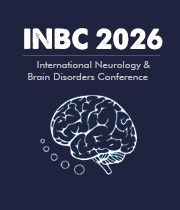Microdiscectomy
A microdiscectomy (also known as a “minimally invasive lumbar discectomy”) is a surgical procedure designed to relieve pressure on the nerve root of the spine caused by a herniated or prolapsed disc in the lower (lumbar) spine. It is commonly used to treat conditions such as sciatica, or radiating leg pain caused by a herniated disc in the lower back. During the procedure, the surgeon makes a small incision in the lower back to allow for the insertion of a narrow tube. The tube, called an endoscope, is then used to remove a portion of the affected disc to relieve pressure on the nerve root. The procedure is done under general or local anesthesia, and usually takes one to two hours to complete. Recovery after a microdiscectomy usually takes several weeks, but studies have shown that patients on average have less post-operative pain than patients who undergo traditional open-back surgery. Most patients experience reduced pain and improved quality of life in the months and years after their surgery. The main benefit of a microdiscectomy is that it is much less invasive than traditional open-back surgery, meaning there is less disruption to the surrounding tissue and muscle, less blood loss, and a decreased risk of infection. Additionally, the use of endoscopic technology allows for a more precise removal of the affected disc fragment, resulting in a more accurate diagnosis and better surgical outcomes. For most patients with lower back pain caused by a herniated or prolapsed disc, a microdiscectomy is a safe and effective way to reduce pain and improve quality of life. It is important to speak with your doctor to discuss all your available treatment options.

Joe Sam Robinson
Mercer University, United States
Robert B Slocum
University of Kentucky HealthCare, United States
George Diaz
Memorial Healthcare Systems, United States
Daniel Curry
Texas Children’s Hospital, United States
Zhenhuan Liu
Guangzhou University Chinese Medicine, China
Kiran Ghotra
Lake Erie College of Osteopathic Medicine, United States




Title : Atypical presentation of Juvenile myoclonic epilepsy in a 16-year-old female: A Case Report
George Diaz, Memorial Healthcare Systems, United States
Title : What we don’t know about hydrocephalus and It’s management
Daniel Curry, Texas Children’s Hospital, United States
Title : Artificial intelligence-driven DWI and FLAIR for the detection of early stroke changes: A systematic review
Shari L Guerra, The Medical City, Philippines
Title : Mapping neuroplasticity in occupational therapy: Evidence-based interventions with measurable neural outcomes
Jessica Marchant, Texas Woman's University, United States
Title : Non-pharmacologic management of orthostatic hypotension in inpatient rehabilitation: A quality improvement initiative
Laura Steakin, Rehabilitation Institute at Sinai, United States
Title : Non-pharmacologic management of orthostatic hypotension in inpatient rehabilitation: A quality improvement initiative
Mackenzie Weber, Rehabilitation Institute at Sinai, United States